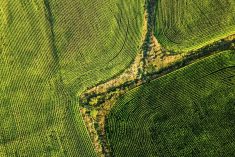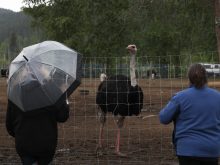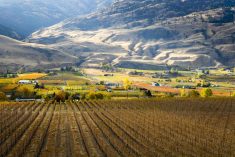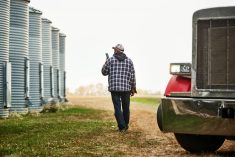New regulations governing how — or if — changes can be made to land’s status within British Columbia’s Agricultural Land Reserve (ALR) are now in force, but local governments get more prep time for their expanded role.
The province on Thursday announced amendments to the Agricultural Land Commission (ALC) Act — having received royal assent last spring — now come into force.
The ALR, which today includes 46,159 square km of B.C. land preserved for agricultural use, was set up in 1973 to stem the loss of “thousands of hectares” annually to development.
Read Also

India slaps 30 per cent import duty on yellow peas
India has imposed a 30 per cent duty on yellow pea imports with a bill of lading date on or after Nov. 1, 2025.
The new rules are expected to tighten the process by which any farmland can be permanently removed from the ALR, by allowing only local governments, First Nations and “other prescribed bodies” to make applications directly to the ALC to have land excluded.
The change “empower(s) local governments to ensure ALC decisions align with the land-use plans in their own communities,” the province said in a release.
Under the amended act, private landowners can still put in requests to have land removed from the ALR — but only if their local government agrees and makes the application to the ALC.
However, the province said Thursday, local governments indicated during recent public consultations that “they need sufficient transition time to implement these changes.”
Thus, that specific rule will go into effect Sept. 30, the province said.
Other amendments now in effect give the ALC the “flexibility” to create decision-making panels which can “better consider local and regional circumstances for land” within the ALR.
With that capability in hand, the province said, the ALC can cut the wait times for landowners seeking decisions — and can “make better use of the commissioners, drawing on their expertise in a related technical field or land-use issue.”
The new amendments are also expected to bring “more rigour” to the reconsideration process, by “clarifying the circumstances under which reconsiderations will proceed.”
They also add new criteria prioritizing “the protection of the size, integrity and continuity of the land base” that the ALC must consider in decision-making.
‘Land use pressure’
The amendments follow review and consultations by a ministerial committee starting in 2018, with the stated goals of preserving the ALR’s “productive capacity,” encouraging farming in the ALR for “uses related to agriculture and food production,” and strengthening the governance of both the ALR and ALC.
“During the past 45 years, the ALR boundary has been refined through early boundary reviews, local government land use planning exercises and over 48,000 individual applications,” the advisory committee said in a discussion document at the time.
The ALR boundary, the committee said, “is often viewed as temporary and adjustable” and. the idea that the ALR is available for urban uses “perpetuates land use pressure on farmland.”
That sort of speculation, the committee said, “results in a focus on applications made by individual landowners to modify the ALR and detracts from proactive work” such as regional-level land use planning, analyzing permitted uses and preserving and encouraging the ALR’s farm use. — Glacier FarmMedia Network












